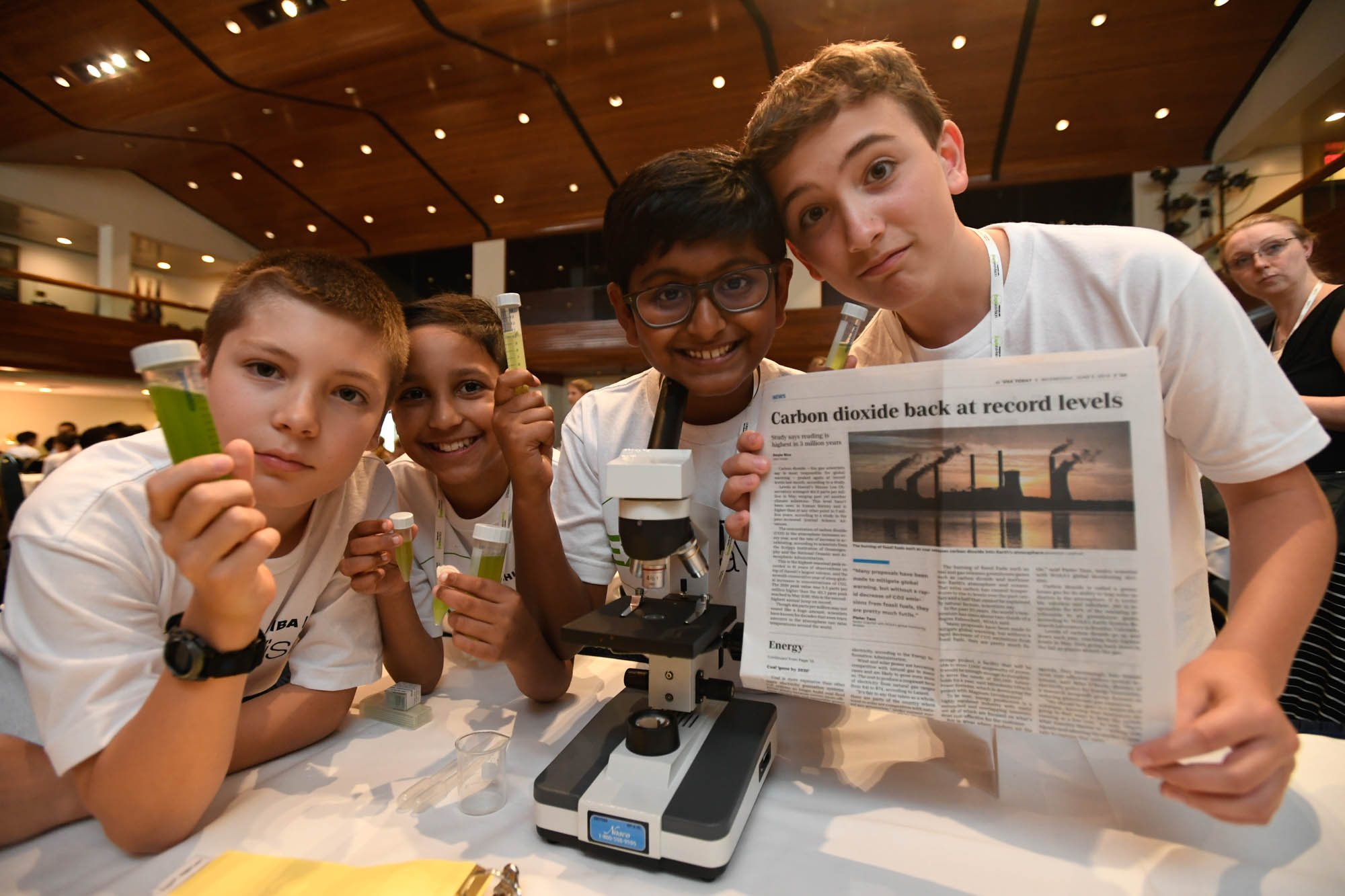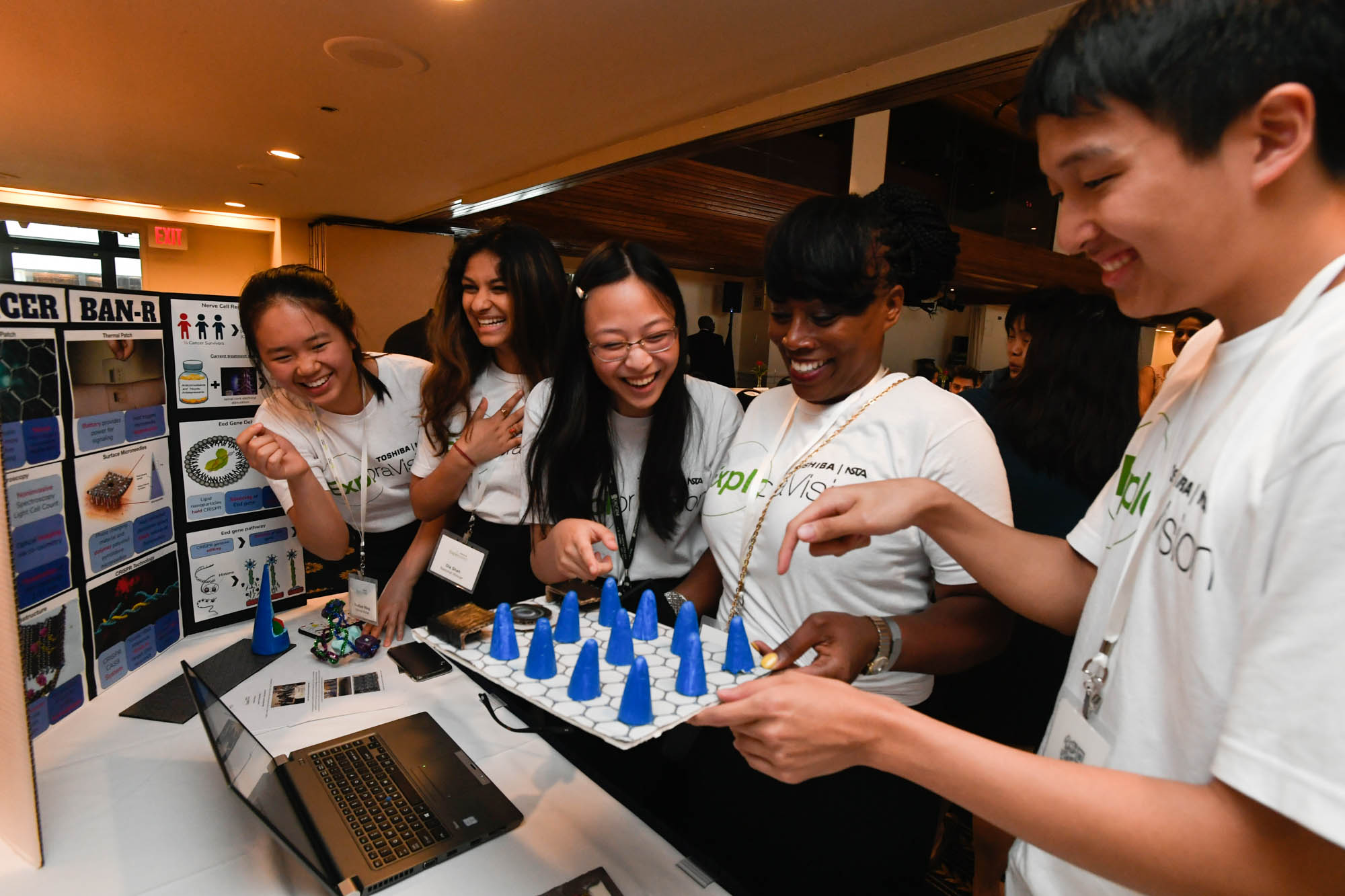How Project-Based Learning Can Increase Student Engagement
Project-based learning can foster student input, create hands-on opportunities, and lead to more unique learning experiences

In the return to in-person classes, re-engaging students and making up for learning loss has been a primary concern for educators.
“We need students who are coming back to school now to experience learning as it should be, to be excited, to have ownership of it, and also experience success,” says Dr. Arthur Eisenkraft, a Distinguished Professor of Science Education at UMass Boston, and the co-founder and head judge of ExploraVision, a STEM-based K-12 scholarship competition.
Eisenkraft is concerned that in the effort to “catch up” students, many educators will simply speed up what they’ve always done. “They’ll say, ‘They missed fourth grade completely, so I know what I'll do, I'll just run that curriculum by them twice as fast, and the heck with them understanding,’” says Eisenkraft. “That's the danger, to throw out all the good stuff we know about teaching and learning, and revert back to models that never worked.”
Enter project-based learning (PBL), which focuses on having students solve real-world STEM-related problems by working on a project over an extended period (typically more than a week) that demonstrates they understand the content knowledge. It often involves hands-on work and builds skills, such as critical thinking, collaboration, and creativity, and ends in a tangible product or presentation that showcases the student’s thought and decision-making processes.
Eisenkraft says PBL also gives educators the opportunity to ask students, ‘What are you interested in?’
“When you do project-based learning, the students won't ask, ‘Why am I learning this?’” he says. Rather than canned or uninspiring answers such as, “It’s on the test” or “You’ll use it later,” PBL allows students to get involved in something that they can see the relevance of immediately and offers real-world applications.
“Project-based learning is more practical in that kids can get their hands on, so to speak, a project, and it cuts across disciplines, which is part of NGSS concepts,” says Eisenkraft. “Even if you don't build something yourself, you are still solving a problem. There are a lot of projects that focus around an idea or concept.”
Tools and ideas to transform education. Sign up below.

Project-Based Learning: Building Engagement
PBL has been shown to improve the understanding of basic concepts, encourage deep and creative learning, and develop teamwork and communication skills among students.
“Not everybody is motivated by the same stimulation, so project-based learning also allows us as teachers to come up with ways to motivate different students in the work we want to do,” says Eisenkraft.
Even though science curricula and the NGSS may dictate certain subjects, students can have input. For example, Eisenkraft suggests when studying forces, go beyond the standard physics equation-type of problems involving angles and speeds.
“The project I do is to have students develop a sport that we play on the moon,” he says. “So they're all coming up with new sports, and I can't predict which sport they’re going to do, and I can't predict how it will go.” PBL allows students to define the task, to wonder, and to have a different view, which is respected by the teacher, he adds. Having that kind of freedom while still following the curriculum is a good way to boost student buy-in.
By providing a hands-on opportunity and student-initiated focus, PBL also creates more memorable and effective learning experiences.
“I like to ask adults, ‘What did you do for a science fair project in middle school?’” says Eisenkraft. “And if they do remember it, they can tell me all about it. It might be as trivial as, ‘I made a volcano.’ But they remember doing the volcano. Do you remember anything else from seventh grade science? Nothing.”
Eisenkraft cautions that PBL shouldn’t just be about making or building objects, but exploring the design and decision-making processes as well. “In middle school woodshop, everybody makes a birdhouse, and everybody makes the same kind. I'm saying, ‘No, no, which bird are you making it for? Why are you making it, and how is that reflected in your design?’ And then, no, the most perfect thing that you show me is not going to get an A unless you tell me what other three ideas you considered while making this that you rejected. Now, it's a real project. You've done it, you've told me what you did, but you also told me what decisions you made.”
Project-Based Learning and Exploravision
To provide PBL opportunities, Eisenkraft helped launch ExploraVision, one of the largest scholarship competitions in the U.S., which is run by the National Science Teaching Association with financial backing from Toshiba and celebrates its 30th anniversary this year. The event challenges groups of K-12 students to solve global issues through technology, with the winners receiving $10,000 college scholarship bonds at maturity. The submission date is January 31, 2022, but educators should be organizing projects now.
Part of the competition is predicting what a technology may look like 20 years in the future, so now after three decades, organizers can look back to see if any old submissions came into being. “So, an example is 27 years ago somebody said, ‘Oh, the newspaper in the morning, you'll just plug in this device you'll have, and it will have the newspaper on it, and then you can read it, and you can press a button and a page will turn, you will press another button it'll get bigger print if you want,’” Eisenkraft says. “Now, of course we have that on our iPhones.”
In Exploravision, students are also asked to recognize that all technologies have positive and negative consequences, and to explore those ideas. “So we ask them to look at what's the downside of the technology, which requires them to really force themselves to confront what all the advertisements tell them, like ‘Oh this technology will solve all the problems in your life,’” he says. “It doesn't work that way.”
Introducing PBL into classrooms right now can be an opportunity to reimagine education and look at what's worked in the past versus old methods that maybe weren't the most effective.
“Exploravision is one opportunity to do project-based learning that satisfies these aspects of what students like about school,” Eisenkraft says. “We don't want to come back to school now all excited, you know, the fist bumps and it's like, ‘Wow we're back together,’ but you don't want them to remember, ‘Oh yeah, take out your pens and papers and copy this sentence from the board.’ Maybe they forgot about those bad things in school. Let's not bring them back.”
Ray Bendici is the Managing Editor of Tech & Learning and Tech & Learning University. He is an award-winning journalist/editor, with more than 20 years of experience, including a specific focus on education.
